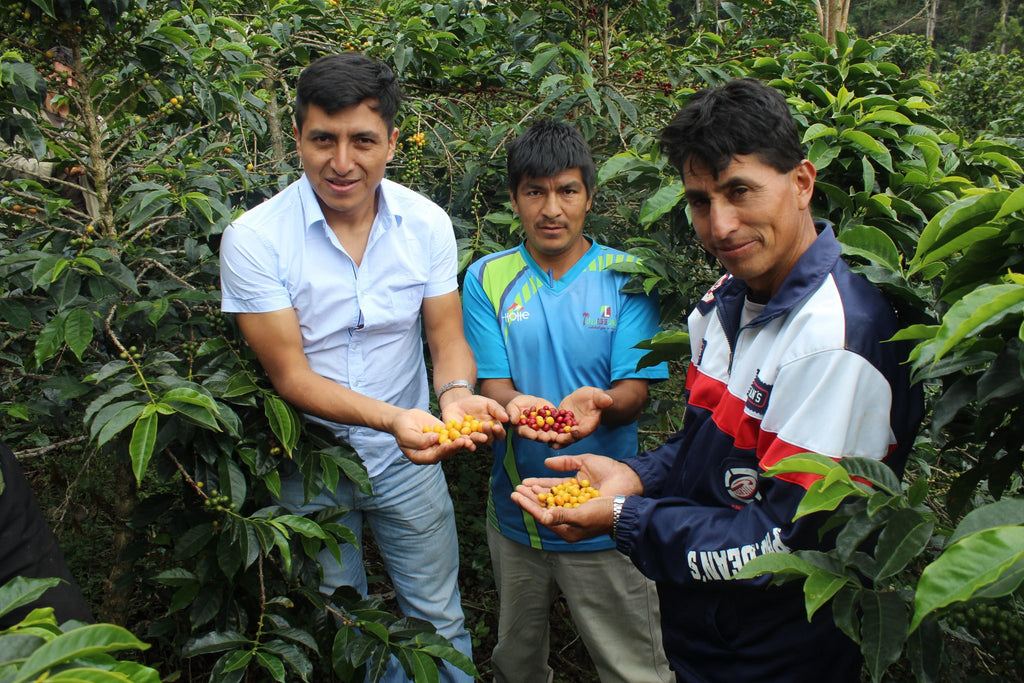We caught up with Falcon Specialty’s Simon Brown to learn more about our latest micro-lot from Peru, La Florida.
Peru is one of the largest coffee producers in the World – blessed with ideal growing conditions, great varieties and super-high altitude there is incredible potential for outstanding coffee. While Peruvian coffees are well known for being well balanced with great sweetness, they have sometimes been accused of lacking complexity.
Peru’s transport infrastructure can explain some of the challenges of raising the coffee quality to the next level: dry mills can often be located long distances from farms, leading to coffee being in transit for too long between farm and mill. This is compounded by individual lots of coffee on occasion being bought and blended en-route, making for less diverse cup profiles. Even with these challenges, quality has been increasing in recent years and with greater intervention and investment the potential of the origin is having a greater opportunity to shine through.
We have only ever had a very limited coffee offer from Peru but with developments in the Country’s coffee continuing to raise quality and 2017 seeing the Cup of Excellence competition in Peru for the first time it was time to take a closer look this season …
Enter our friends at Falcon Coffee. We have sourced green coffee through Falcon since 2014, as well as having a dedicated cupping lab in Lima, Falcon spend plenty of time at origin there too. This year’s harvest saw Simon Brown, one of Falcon’s green coffee buyers, basing himself in El Diamante San Jose de Lourdes, an area in Cajamarca, Northern Peru. Last month we caught up with Simon to find out more about his time working with producers in the region.
Mark: What Brought you to focus on Peru in 2017?
Simon: Starting a micro-lot project in Peru allowed us to unlock some of the great potential there. Peru has perfect growing conditions but many small producers don’t have access to the specialty market and the price premiums that come with that. Since most of the producers only own between 1 and 5 hectares of land, price premiums from quality uplift projects can make a huge impact on the farmers involved.
Mark: How long were you were you based in San Jose de Lourdes?
Simon: I was there for 6 weeks in total; living in a small community, in a shed with an outhouse. Very basic conditions without running water. It was challenging, but nothing compares to being based on the ground working with producers.
Mark: How easy was it to get buy-in from the producers?
Simon: For this type of work it’s essential that I put in the hours in on the ground – it shows the farmers we’re serious and they start to listen and adopt some of the practices I’m teaching them. Getting producers to commit to the project was still difficult, a lot of them were sceptical and hadn’t done anything like this before so it was a completely new proposition for them.
Once I started to build up a relationship with them and they could see that I stayed and visited each of them a number of times they began to believe that I was serious. Having a very transparent pricing structure, costing up the additional work for micro-lots and creating easy-to-follow resources for on-farm quality improvement are key in projects like this. I was mainly advising them on post-harvest processing; picking, wet-processing and drying.
Mark: I know that keeping lots separate can be tricky, especially at the dry mill, how did you manage to do this?
Simon: It ‘s very hard and costly to keep everything separate. Mostly this is done at the warehouse; since producers deliver bags as they come off the drying beds, I had to re-design the storage and create a tagging system that displayed all the necessary information to ensure nothing gets mixed and lots can be separated by cup score. Having a coding system for the lots really helped. Normally the co-op group would get a much higher turnover of coffee, so having micro-lots sitting around until they’re a full producer-lot ties up a lot of cash and space, which is a huge limitation on this kind of work.
Mark: When we cupped Ruiz Salavador’s lot from La Florida it was a real stand-out on the table. How did the program perform overall?
Simon: The results were phenomenal! Most of these producers hadn’t ever sold speciality coffee before, they always just moved their coffee through the co-op where it would get lost in large blends. The average cup score increase was around 3 points, from 83 to 86. Producers were very happy with the prices and are keen to grow the volume and improve the quality further next year.






Leave a comment
This site is protected by hCaptcha and the hCaptcha Privacy Policy and Terms of Service apply.